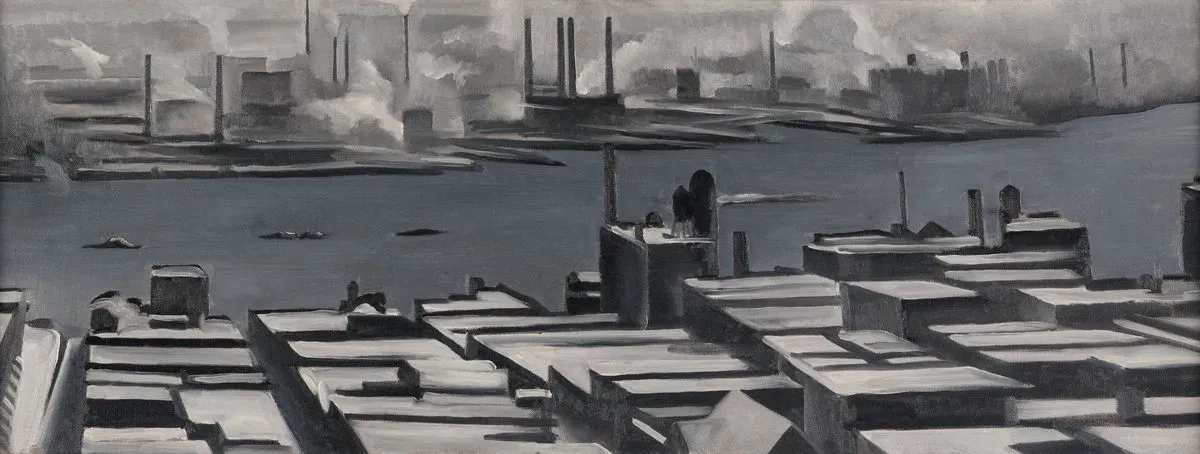 Georgia O'Keeffe, East River from the Shelton (East River No. 1), 1927–28, oil on canvas, 26 × 22 in., New Jersey State Museum Collection, purchased by the Association for the Arts of the New Jersey State Museum with a gift from Mary Lea Johnson. Photo by Peter S. Jacobs © Georgia O'Keeffe Museum.
Georgia O'Keeffe, East River from the Shelton (East River No. 1), 1927–28, oil on canvas, 26 × 22 in., New Jersey State Museum Collection, purchased by the Association for the Arts of the New Jersey State Museum with a gift from Mary Lea Johnson. Photo by Peter S. Jacobs © Georgia O'Keeffe Museum. Georgia O'Keeffe’s name evokes images of luscious flowers and the intricate beauty of nature, characterized by extreme close-ups of petals and spiraling forms that became hallmarks of her work. For many decades, her artistic focus was the Southwest, where she created some of her most renowned pieces that still pose interpretative questions. The Southwest, however, only became her home in 1949. Before that, she was no stranger to big cities, having lived in Chicago and New York multiple times since 1905. It was her time in New York, particularly, that inspired a remarkable body of work that captures the city’s dynamic energy.
A significant turning point came in 1924, when O'Keeffe moved to the Shelton Hotel in New York—the tallest residential skyscraper in the world—alongside her husband, Alfred Stieglitz. This change of perspective brought new insights into the urban landscape that surrounded her, inspiring her New York series.
Grouped under the title My New Yorks, this selection of works is O'Keeffe's ode to the city she temporarily called home, featuring its magnificent skylines and geometries. Comprising around 100 paintings, pastels, photographs, and drawings, O'Keeffe's New Yorks are on view at the High Museum of Art this fall. Curated by Sarah Kelly Oehler and Annalise Madsen, it is the first show to systematically analyze this aspect of O'Keeffe's opus within the context of her art.
"The exhibition came out of talking with many visitors over the years and recognizing that our visitors didn't have an understanding that O'Keeffe lived in New York City and painted New York City at all," explains Oehler.

Although the number of works is not large, the period in which they were done, between the mid-1920s and early 1930s, is decisive for the artist and sets some trends in her approach to color and form that would become her staples over the years. As Madsen notes, "this period is so important to O'Keeffe becoming O'Keeffe." The exhibition ties these disparate narratives together, allowing for a broader insight into O'Keeffe's artistic development and significance for modernism.
The speed-up of industrialization in the US and the rapid changes in landscapes often resonated in Modern art through novel explorations of form and a stronger turn toward expressive approaches. While abstraction rushed to systematize the visible and the spiritual into manageable chunks of color and line, O'Keeffe's work, with its rush of color outlining organic, floral forms, seemed like an oddball.
However, My New Yorks breaks with this narrative, as it introduces a broader spectrum of O'Keeffe's interest, associating her artistic style with a complex history of her circumstances, her lived experience, and the new environment she found herself in after joining Stieglitz in the Shelton Hotel.
"The New York works were touchstones for O'Keeffe in launching herself to the public year after year in her exhibitions. There's a centrality to the New York pictures among those flowers, landscapes, and still lifes. We're bringing them back into a story of O'Keeffe launching her career and becoming the O'Keeffe we recognize today; the New Yorks are part of that," said Madsen.
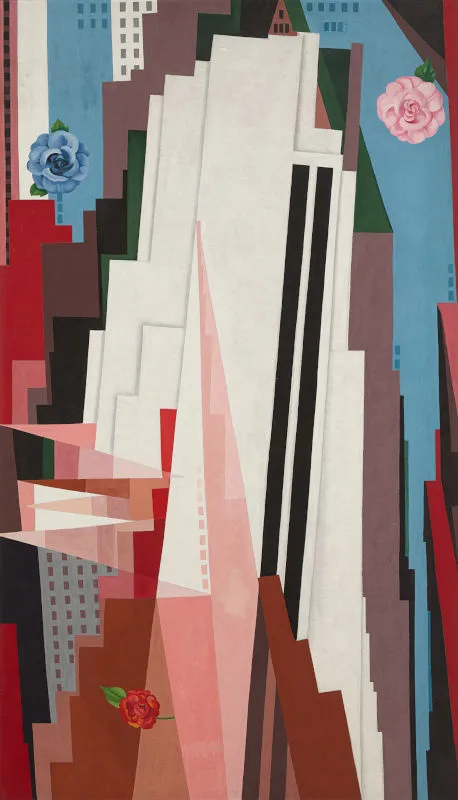
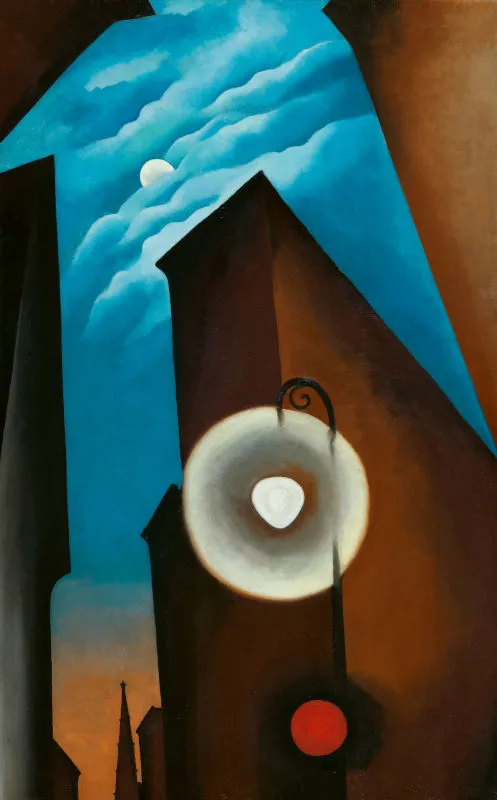
Alfred Stieglitz was already in New York when O'Keeffe joined him there, creating his photographs of the city from the street level. When they moved to the Shelton Hotel, both O'Keeffe and Stieglitz were fascinated by the new views, explains Oehler, leading to "a radically new perspective in their respective mediums." These works show different aspects of the city, documenting its contrasts and expansion.
"This simultaneous exploration allowed both artists to experiment with composition, color, and framing," Oehler explains."O'Keeffe has composition and color and canvas size and so many different aspects of her practice, while Stieglitz has a camera lens and different ways of focusing, different ways of framing and cropping."
The works are a wonderful testimony to the artists' relationship and the intellectual stimulus they provided to each other. Both Stieglitz and O'Keeffe opened their artistic languages to new possibilities in New York, creating individual aesthetic visions of this remarkable place.
"These works become a wonderful evidence of a relationship that was so much a relationship of equals in many ways," Oehler notes, "highlighting the intellectual underpinning to their entire relationship, as well as the artistic creativity that was so central to it."
O'Keeffe's New Yorks have a wide aesthetic range: from atmospheric vistas to dramatic, geometric explorations of its corners and skylines that verge on abstraction. Dimensions of these works also vary considerably, as O'Keeffe developed her modernist language in a range of canvas and paper sizes.
Her personal circumstances also affected her aesthetic choices—she and Stieglitz moved up the Shelton floor by floor over the years, finally reaching the 30th floor, the tallest one for residents that provided a unique view of the city.
"I had never lived up so high before and was so excited that I began talking about trying to paint New York. Of course, I was told that it was an impossible idea—even the men hadn't done too well with it."
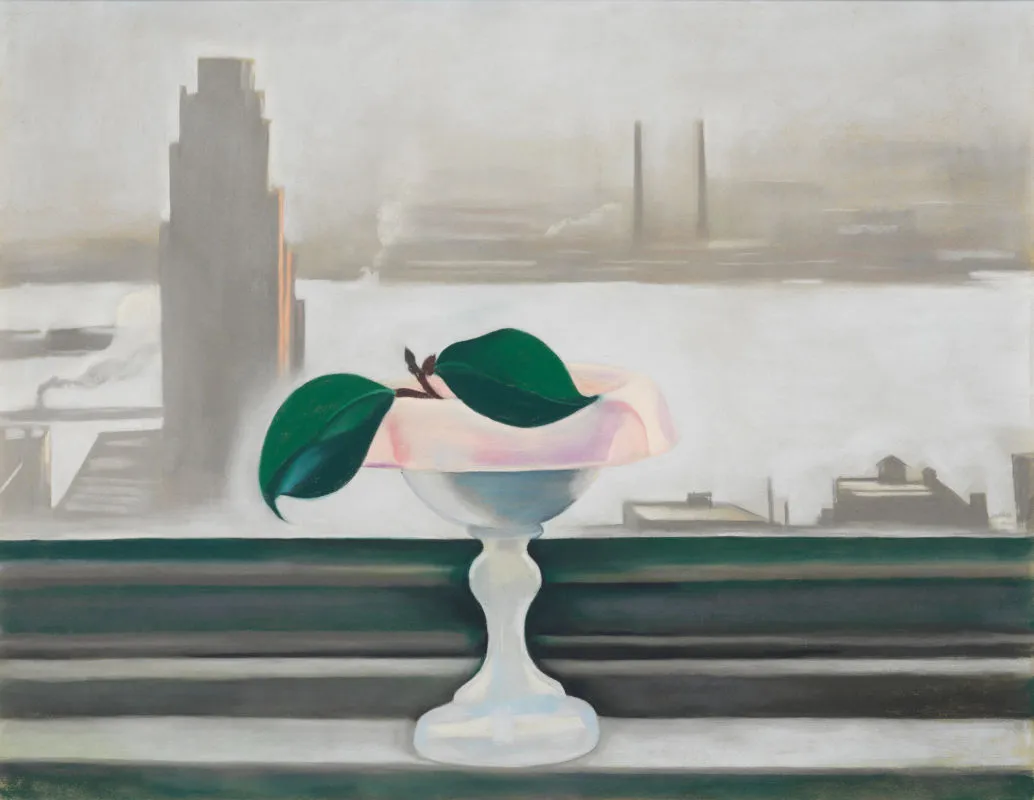
The exhibition at the High Museum of Art corresponds with O'Keeffe's exhibition practices; the curators noticed that her New Yorks were never exhibited as isolated from her other works. "She never had a show of just New York paintings," Oehler notes. "For example, she always brought her New York paintings into an exhibition space with abstractions, flower paintings, and still lifes, allowing them to intermingle in a way that we’ve historically lost sight of since that time."
Nature and the built environment were not so disparate for O'Keeffe as different theories might suggest. While New York expanded and rose in scale, so too did O'Keeffe's painted flowers. The natural world grew larger in her art while, in contrast, the city seemed to shrink.
"I'll make them big like the huge buildings going up. People will be startled; they'll have to look at them," she explained. When asked why she painted flowers so big, she replied, "You'd never ask me why I make the East River so small." The two subjects became interlinked and mutually influential as the sensibilities of the industrialized society changed.
The exhibition includes paintings such as The Shelton with Sunspots, a remarkable interpretation of an urban landscape that brings natural and human-made forces together in an almost abstract manner, and Pink Dish and Green Leaves, for which O'Keeffe said it was her 'foolishness.' If she was that way, she explained, "I might as well put it down."
While the first offers a harmony of geometries and colors, the second reveals one aspect of O'Keeffe's practice that was mostly left out of her art—the domestic setting. Although represented only as a window frame and a small dish in front of it, this domestic space is vibrant with color, as the other side, over the river, remains muted and abstracted in comparison. The combination of two worlds in one painting is the statement on the equality of the subjects for O'Keeffe—the natural landscape and the city as two poles that defined both her artistic practice and personal environment.
Other pieces that continue this exploration include New York Night, New York Street with Moon, and the fully abstract New York Night (Madison Avenue) composition. Next to them are From the Lake No 1, a synergy of forms and colors in an organic, flowing format resembling her floral depictions, and Pattern of Leaves, another impression of nature whose lines and colors could as well be derived from New York's urban landscape.
"One can't paint New York as it is, but rather as it is felt."
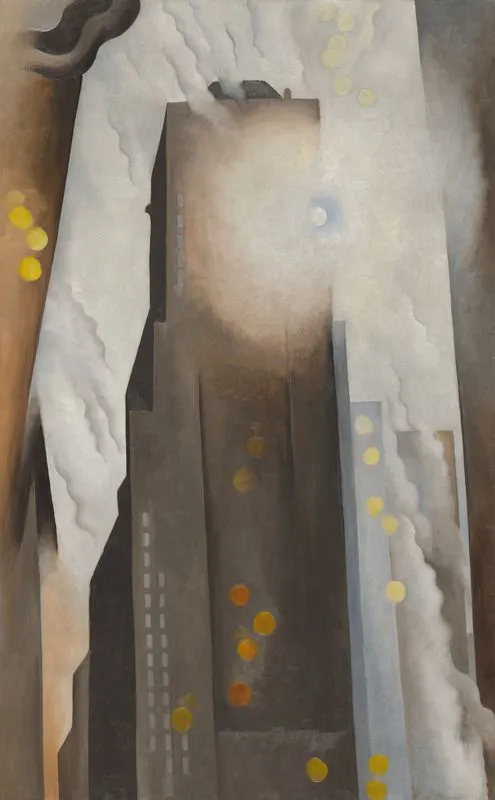

The exhibition showcases that O'Keeffe was not limited to a single medium, as she worked across various media, including charcoal, watercolor, and pastel. "These different media were so integral to everything she did," Oehler explains. "This flexibility across different media allowed her to experiment creatively. While oils are more frequently displayed, recognizing the breadth of her work is essential. She consistently engaged with different media throughout her career. It is more of a recognition that all these different media were part of how she defined herself artistically."
Finally, it is important to note the specific, intersectional aspects of O'Keeffe's New Yorks, whose production, exhibition, and reception cross various gender, race, and class norms. Being told that painting New York is impossible because even men could not succeed at it tells us of the entrenched assumptions about O'Keeffe work and that of other women artists. These assumptions propelled her torward experimentations with form and subject matter, marking a significant contribution to modern art.
Her explorations of the organic and inorganic, the interconnectedness between the two, and the new sensibilities that arose with industrialization remain among the most thoughtful interpretations of the modern world in art.
Organized by the Art Insitute of Chicago, the Georgia O'Keeffe: 'My New Yorks' exhibition will be on view at the High Museum of Art in Atlanta until February 16th, 2025.


